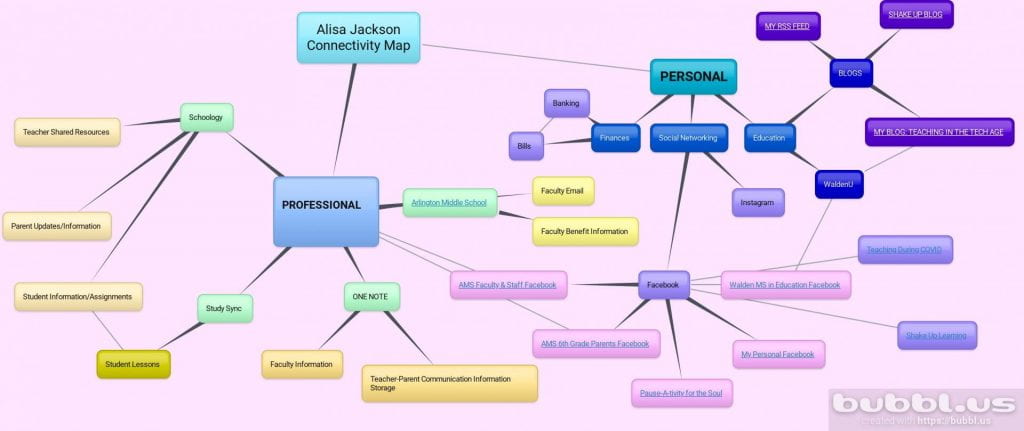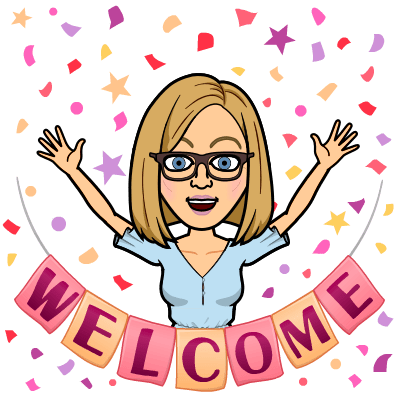I NEVER REALIZED HOW CONNECTED I AM.

The most amazing thing is to see how many connections connect personal and professional. I’m not sure how good that is. Sure it makes me a better worker – staying in touch with the changing world of technology and teaching, but what about my personal life? I don’t seem to have much of that.

My Reflection of Connectivity
- There was a time, not so very long ago that I had email. Just email. No texting, no facebook, just email. My times have changed. I gaze at the mind map of connectivity that I have created and wonder how did I ever get along with just email?
- My connectivity ranges from the old stand-by of email to blogging sites which are newly discovered. I have favorite webpages that I visit for updates on new technology and regular facebook groups that must be visited at least every few days to stay up on the news from school, businesses, friends, and family. My one-stop-shopping-for-info places are the most valuable to me these days. Schoology and One Note contain most anything I need to know on a daily basis from statistical information to grades to human resources contact information. All of these connections are invaluable to me in my professional and personal life.
- When asked how to I find new information when I have questions I have to stand by my tried but true google. While I learned new tricks such as google scholar for certain types of information, I have found that my favorite search engine with always cast me in the right direction to answering questions every day.
- My personal learning network used to be connected by email, text, and phone but no longer. All of those I consider valuable in my life can be contacted through facebook, instagram, twitter, and even a few personal webpages. The same is true of personal and professional advisors. Even in the age of the pandemic, I stay connected to people and information in a big way through all of the branches of my connectivity mind map.
- What does yours look like? Try bubbl.us and see for yourself!

My Kitty Prissy and I can be seen doing this most evenings.




